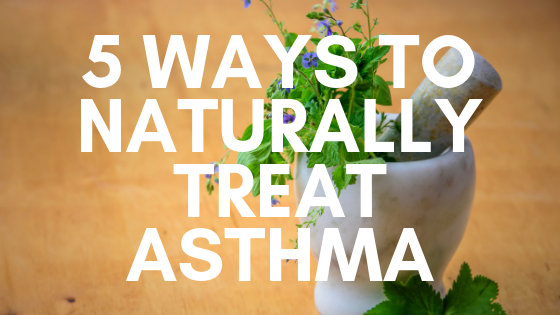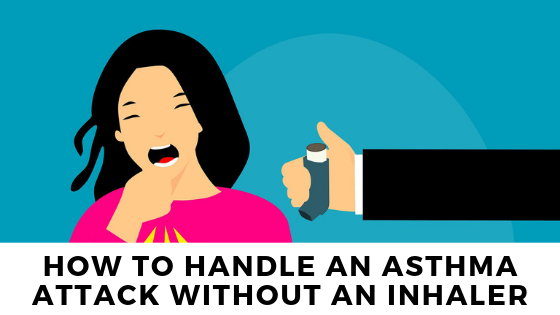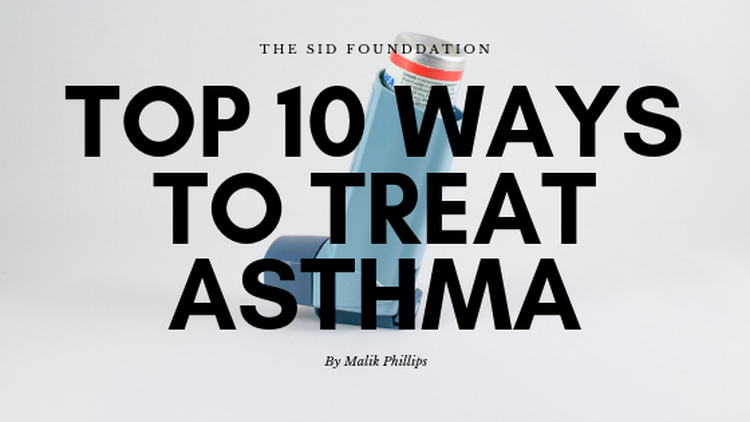|
Most of us take breathing for granted until we or someone we know begins to suffer from COPD, asthma or another debilitating lung disease. In addition to long term breathing problems, many of these diseases can lead to a lung transplant. Maintaining good lung health is especially important during the COVID-19 pandemic. This virus attacks the lungs and causes severe breathing problems even after your recover from it. Here are some activities that you can do to strengthen your lungs and decrease your chances of needing a transplant in the future. These activities are listed according to fitness level. If you aren’t particularly athletic, start with the beginner level activities. If you are an athletic person, try them all! Beginner Fitness Level (Recommended for any age group): 1. Laughter Yoga- Laughter yoga combines breathing practices from traditional yoga with deep belly laughter. Deep belly laughter forces your lungs to expand more than they normally would and replaces the carbon dioxide that sits at the bottom of your lungs with oxygen. In between the laughter exercises, laughter yoga also incorporates deep breathing exercises causing you to take fewer, more effective, breaths overall. 2. Yoga- Yoga is founded upon breathing practices. In yoga, you consciously take long, deep breaths while practicing different poses and/or meditating. The long inhales and even longer exhales force the carbon dioxide that sits at the bottom of your lungs out and makes room for more oxygen. These exercises also help you slow down your breathing so you take fewer, more effective, breaths. Intermediate Fitness Level (Recommended for any age group): 3. Biking- Biking is a cardiovascular exercise that forces you to use your lungs to their maximum capacity for an extended period of time which strengthens them. Advanced Fitness Level (Recommended age group: teens-50s): 4. Long Distance Running- Similar to biking, long distance running forces you to use your lungs to their maximum capacity for an extended period of time. This helps you get rid of all the carbon dioxide that sits at the bottom of your lungs and makes room for more oxygen. More oxygen in your lungs means more oxygen in your blood which results in better overall health. 5. High Intensity Cardio -HIIT (High Intensity Interval Training), sprints, and jump rope are examples of high intensity cardio. They include a regimen of short bursts of anaerobic exercises which leave you out of breath. They are an intense cardiovascular activity that force you to use your lungs to their maximum capacity. The more you use your lungs to their full capacity, the healthier they will be.
If you struggle with your lung capacity, try starting with beginner level exercises like laughter yoga and slowly advancing to the more difficult ones like biking around town or in nature.
0 Comments
What Is Asthma?
Asthma is considered to be a long term (chronic) lung disease which narrows and inflames the airway. Millions of people of all ages and genders are known to be affected with this ailment across the globe. This ailment is also said to contribute towards untimely deaths. It develops mainly during childhood.
Symptoms People suffering from this ailment show symptoms like wheezing, breathing problems, allergies to strong smells and dust, coughing, chest tightness, etc. Although the reasons why Asthma develops have not yet been confirmed, there are cited environmental and genetic factors which contribute towards this condition. Symptoms might differ from one person to another along with its intensity. Classification It is classified into two major types, namely, intrinsic or non-atopic and extrinsic or atopic. Aggravation by allergens is what mainly causes the symptoms to develop. People suffering from intrinsic type are not aggravated or induced by external allergens, while those having extrinsic asthma suffer from wheezing attacks once they come across the allergens inducing inflammation or causing allergy.
JOIN 200+ DONORS WHO'VE DONATED OVER $40,000 TO HELP LUNG TRANSPLANT PATIENTS. DONATE WHAT YOU THINK IS FAIR. MOST PEOPLE DONATE AT LEAST $10
Causes
There are cited several conditions which are known to cause this ailment.
Therefore, Asthma is chronic condition which affects the lungs. People deviling this ailment tend to have this condition in their body. However, asthmatic attacks tend to occur only if certain elements ‘triggers’ and initiate it. Moreover, this particular condition is yet to have a proper and thorough cure. Triggers are to be avoided and Asthma Treatment should be started at the very earliest time possible once it is diagnosed. Only then can it be controlled and ensured that it does not become chronic in nature. Conclusion 1 in 12 people have Asthma as it’s one of the most common lung diseases in the world. Severe Asthma can get to a point where your lungs may stop functioning and you may need a lung transplant. Did you know that lung transplants have the lowest survival rate among all transplants? Only about 50% of people live 5 years after having a lung transplant and patients have to take up to 50 pills a day! We at The Sid Foundation want to increase that survival rate and help patients be able to afford that medication which is why we raise money for lung transplant research and development and lung transplant patients. We need your help in increasing the survival rate and helping lung transplant patients so please join the 200+ donors who have raised over $40,000 and donate what you think is fair to help lung patients everywhere. If you donate $10 or more, we will send you a free Lung Girl comic book and put your name on our wall of donors so that you can be recognized for your contribution forever.
Asthma absolutely sucks, however what sucks more than asthma is all the potential medication one has to consume to treat it. People with more severe asthma have to use inhalers, pills, pain killers, and some have to walk around with a machine attached to their body. Here are some natural treatments you can use to decrease the amount of medication you have to take.
1. Natural Supplements Chronic body inflammation that causes asthma may at times deplete the crucial nutrients in asthmatics. Therefore, people with asthma should take in natural supplements that offers them all the minerals and vitamins essential to their immune system. Click here for a list of great natural supplements for asthma 2. Natural Probiotics Probiotics are live microorganisms that may be able to help prevent and treat some illnesses. Promoting a healthy digestive tract and a healthy immune system are their most widely studied benefits at this time. These are also commonly known as friendly, good, or healthy bacteria. The antibiotics in your medicine however tend to destroy these bacteria. Therefore, supplementing with probiotics is sure to help heal Asthma from within. Click here to view a list of healthy probiotic foods. JOIN 200+ DONORS WHO'VE DONATED OVER $40,000 TO HELP LUNG TRANSPLANT PATIENTS. DONATE WHAT YOU THINK IS FAIR. MOST PEOPLE DONATE AT LEAST $103. Eat Better Fats Those suffering from asthma need to pay proper heed to fats. Good fats are termed to be anti-inflammatory, with omega 3 fatty acids playing an important role. Increase intake of fish oil supplements or fish, olive oil, & nuts and decrease consumption of processed foods such as canola oil, fast food, and sugar. 4. Eat Healthier The major inflammation sources that cause asthma are the foods we eat. Consume more anti-inflammatory foods such as vegetables, apricots, papaya, onions, tomatoes, and pumpkin. Some foods to avoid are dairy products, citrus fruits, wheat, sugar, preservatives, and dyes.
5. Anti Asthma Your Environment
Asthma is an inflammatory reaction taking place when exposed to irritants and allergens. All irritants and allergens that might trigger asthmatic attacks should be removed including aerosol sprays, chemicals, certain medications, animal dander, pollen, perfumes, molds, and sulfates. Basically make sure you consistently do some spring cleaning. These natural asthma treatments will help a lot with your asthma and even better will allow you to at least decrease the amount of medication you have to take. Conclusion 1 in 12 people have Asthma as it’s one of the most common lung diseases in the world. Severe Asthma can get to a point where your lungs may stop functioning and you may need a lung transplant. Did you know that lung transplants have the lowest survival rate among all transplants? Only about 50% of people live 5 years after having a lung transplant and patients have to take up to 50 pills a day! We at The Sid Foundation want to increase that survival rate and help patients be able to afford that medication which is why we raise money for lung transplant research and development and lung transplant patients. We need your help in increasing the survival rate and helping lung transplant patients so please join the 200+ donors who have raised over $40,000 and donate what you think is fair to help lung patients everywhere. If you donate $10 or more, we will send you a free Lung Girl comic book and put your name on our wall of donors so that you can be recognized for your contribution forever.
How To Handle An Asthma Attack Without an Inhaler
Millions of people, both adults and children are known to suffer from Asthma. The common Asthma Medication prescribed by doctors include inhalers where the patient is required to take some puffs from the medical device to get relief. While every asthmatic should have an inhaler on hand, if you are like me, that means you don’t even know where your inhaler is. So here are 5 tips on what to do in case you have an asthma attack without an inhaler. 1. Drink plenty of un-carbonated, clean water. The lungs require water for pumping air. Not having sufficient water will mean no sufficient pumping of air. At the same time, only clean water should be consumed. Soup, coffee, and tea do not count in this regard and should be avoided. So if you are experiencing an attack make sure to get water immediately and drink it slowly. 2. Sit down and Sit up. Sit down and then sit up straight. According to Medical News Today It is easier to breathe simply by sitting rather than any other given position. Do not lay down. Stay calm and seated until breathing is fully retrieved and is under control. Any work that the person has to complete can wait.
3. Hold the middle finger.
Wrap all fingers with your hand over the other hand’s middle finger and hold gently. This is termed to be an energetic, powerful Mudra which has been practiced for thousands of years. You don’t have to squeeze, massage, rub, or pull. Simply hold the finger, until breathing gets normal. It is recommended for a few seconds or minutes in some cases. It is definitely powerful and reliable. Click here to learn about 5 more mudras to help with your asthma 4. Place some sea salt (a pinch) on your tongue. Place a pinch of sea salt on your tongue after having water (2 glasses) and allow it to dissolve right on the tongue itself. It is a strange, yet miraculous recipe. The order you do it in is very much crucial. It can be life saving. According to My Asthma Home Remedies Sea salt is a very powerful natural antihistamine. It can also be used in an inhaler, without harmful side effects of most medical drugs. Taking a pinch of sea salt with water helps to break the mucus plugs in the lungs, get rid of phlegm, and stop persistent dry cough that accompanies any asthma attack. It is also a natural antiseptic that helps the body fight germs and bacteria and helps maintain your body’s electrolytes in a healthy balance. 5. Doing something simple can help to bring down anxiety from the otherwise terrified mind. A big mistake people make during an asthma attack is that they go crazy with their breathing because they are so terrified. If you’re breathing really hard trying to catch your breath you may be making the problem worse. Calm down and try to pay attention to different objects in your surroundings and also try to trace curved lines using your eyes. It can be objects like vases, round table corners, lamps, etc. If nothing is found, then simply imagine curved lines, spheres and circles in air and trace those with your eyes. This will help you calm down and start to control your breathing more which should buy you more time to get to the hospital or find your inhaler. SIGN UP FOR OUR NEWSLETTER AND SCHEDULE YOUR FREE LAUGHTER YOGA SESSION TODAY
Conclusion
1 in 12 people have Asthma as it’s one of the most common lung diseases in the world. Severe Asthma can get to a point where your lungs may stop functioning and you may need a lung transplant. Did you know that lung transplants have the lowest survival rate among all transplants? Only about 50% of people live 5 years after having a lung transplant and patients have to take up to 50 pills a day! We at The Sid Foundation want to increase that survival rate and help patients be able to afford that medication which is why we raise money for lung transplant research and development and lung transplant patients. We need your help in increasing the survival rate and helping lung transplant patients so please join the 200+ donors who have raised over $40,000 and donate what you think is fair to help lung patients everywhere. If you donate $10 or more, we will send you a free Lung Girl comic book and put your name on our wall of donors so that you can be recognized for your contribution forever. Top 10 Ways To Treat Asthma Who likes asthma raise your hand… That’s what I thought. Nobody. Nobody likes having to deal with wheezing, not being able to breath, carrying around an inhaler, not being able to really participate in sports etc. I have asthma and trust me I hate it, but that doesn’t mean that it’s not there and it shouldn’t be treated. So here are the top 10 ways to treat asthma so you don’t have to deal with that embarrassing, “Where’s my inhaler?” moment. 1. Get an Inhaler Inhalers, although sometimes embarrassing, save lives. Make sure you talk to your doctor to see what the best inhaler for you would be, but here’s a list of some of the leading inhalers out there today. I’ve personally been in situations where if I didn’t have an inhaler I would’ve been in super big trouble and I don’t want anything like that to happen to you. 2. Pace Yourself I know you want to jog super hard, be up next for the basketball game, and do 5K marathons, but make sure when you are doing a lot of extraneous activities that you pace yourself as to not over exert yourself. A good tip from the Asthma and Allergy Foundation of America is to
3. Have an Asthma Action Plan An asthma action plan is a plan that has information and instructions on how to treat your asthma, such as what medicines you use, in certain situations such as your breathing going from great, to good, to bad, and worse and what to do at each level. It’s a handy thing to have especially if you have children with asthma and they are left with a babysitter or family member who isn’t as knowledgeable about their asthma as you. You can download an Asthma Action Plan Here 4. Avoid Asthma Triggers Asthma triggers are simply things that trigger your asthma. You want to make sure you avoid these triggers to a certain extent so you are not constantly having asthma hiccups. Common asthma triggers are
For a more detailed list visit this website. 5. Do Breathing Exercises According to Health Central, people with asthma tend to breath faster than others and often are mouth breathers rather than nose inhalers. This means that if you take some time to slow down your breathing you will help your lungs circulate air better and reduce asthma flare ups. Try finding a nice quiet space and breath from your diaphragm slowly for about 5 minutes a day. Not only will you feel more relaxed but your asthma is less likely to bother you. For a list of breathing exercising go here. 6. Give an Inhaler to a Close Friend or Family Member We forget things all the time and the last thing you want to be without in case of an emergency is your inhaler. A good way to make sure you got it even if you don’t have it is to give your friends and family an inhaler and have them keep it somewhere like in their car glove box or purse so that you're much more likely to be able to receive potentially life saving treatment at all times and places. 7. Get Vaccinated I know there is a lot of controversy around being vaccinated these days but asthma increases the chances for you to get certain preventable diseases such as the flu. If you get vaccinated, it decreases the chances you will get these diseases which can also serve as a trigger for your asthma in the first place. 8. Track Your Symptoms Make sure to write down what makes your asthma specifically start to flare up. Is it every time you walk past that one bush? Is it only when you play sports? Knowing your own symptoms and causes will help you to avoid things in your life that will have a negative effect on your asthma and overall make you healthier in the long run. 9. Try Acupuncture According to VeryWell health some studies have shown that acupuncture has helped with asthma treatment. Acupuncture involves the stimulation of certain points on the body, often with needles or electrodes, to gain a therapeutic effect. This is one of the most common complementary procedures with millions of American participating each year for a number of different indications. Use with caution as this can have some side effects, but if you are looking for an alternative way to treat your asthma it may be worth a try. 10. Hypnosis I know it sounds crazy, but don’t take my word for it. According to healthline.com hypnosis is an alternative way to treat asthma. Who knew? Hypnosis has been used clinically to treat a variety of disorders that are refractive to pharmaceutical-based therapies, including asthma, but relatively little attention has been given recently to the use of clinical hypnosis as a standard treatment for asthma. Significant data suggest that hypnosis may be an effective treatment for asthma, but it is premature to conclude that hypnosis is unequivocally effective. Studies conducted to date have consistently demonstrated an effect of hypnosis with asthma. More and larger randomized, controlled studies are needed. Existing data suggests that hypnosis efficacy is enhanced in subjects who are susceptible to the treatment modality, with experienced investigators, when administered over several sessions, and when reinforced by patient auto hypnosis. Children in particular appear to respond well to hypnosis as a tool for improving asthma symptoms. Conclusion 1 in 12 people have Asthma as it’s one of the most common lung diseases in the world. Severe Asthma can get to a point where your lungs may stop functioning and you may need a lung transplant. Did you know that lung transplants have the lowest survival rate among all transplants? Only about 50% of people live 5 years after having a lung transplant and patients have to take up to 50 pills a day! We at The Sid Foundation want to increase that survival number and help patients be able to afford that medication which is why we raise money for lung transplant research and development and lung transplant patients. We need your help in increasing the survival rate and helping lung transplant patients so please join the 200+ donors who have raised over $40,000 and donate what you think is fair to help lung patients everywhere. If you donate $10 or more, we will send you a free Lung Girl comic book and put your name on our wall of donors so that you can be recognized for your contribution forever. |









 RSS Feed
RSS Feed